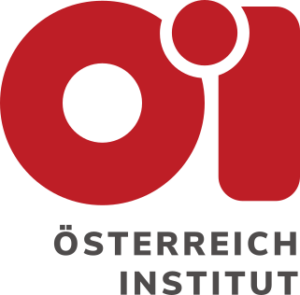Austria may be a small country, but mighty big when it comes to customs and traditions – which play a central role in Austrian culture, both on public holidays and on other festive occasions throughout the year. From the traditional Almabtrieb to the convivial Kirtag and the traditional Sunday morning pint, there’s a whole range of traditions to discover that have become an integral part of everyday life in Austria. To help you find your way through the sheer amount of traditions, we’ve picked out the best-known ones!
Customs & traditions in spring
Fasching
The year gets off to a lively start in Austria: As soon as the Christmas season is over, carnival (known as “Karneval” in Germany and “Fastnacht” in Switzerland) begins. First, carnival is celebrated at elegant balls such as the Vienna Opera Ball, before the colourful and exuberant celebrations continue all the way into February. At parades, masked balls and carnival parties (also known as “Gschnas” in the countryside), Austrians celebrate in creative costumes and hidden behind mysterious masks.
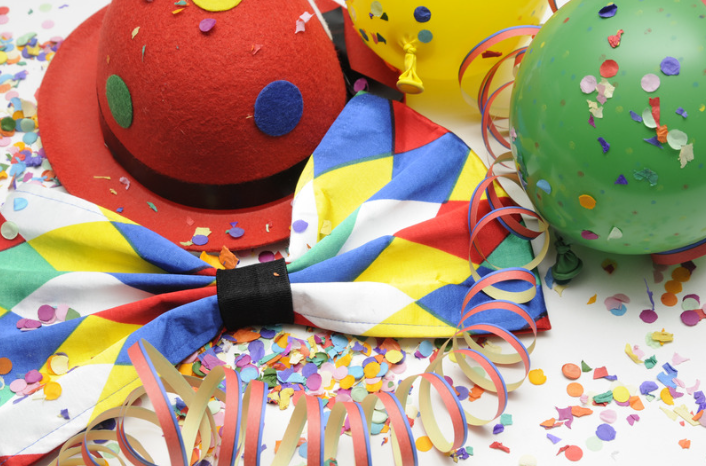
At the carnival parades, groups make their way through the streets in elaborate and colourful costumes, playing music, handing out sweets, and inviting people to join in the celebrations. This time of year is very special for children, because dancing dressed up as a princess, dragon or cute kitten, taking photos or waving to the parade spectators makes for truly unforgettable memories. The highlight of the carnival season is Shrove Tuesday with especially lavish and over-the-top celebrations before Lent begins on the following Ash Wednesday.
Easter customs
Speaking of Lent: this is the first of the many customs around Easter. It traditionally lasts 40 days, during which many people give up meat, alcohol or other small “vices” such as smoking or sweets. At the end of Lent, Holy Week marks the pinnacle of the Easter celebrations. On Palm Sunday, palm catkins (the soft, fluffy willow flowers that grow on the branches in spring) are consecrated in many Catholic parishes, and on Maundy Thursday the church bells in the country fall silent and are replaced by rattling. Local children parade through the village with “ratchets” (wooden instruments that rattle loudly when twisted and turned) to replace the ringing of the church bells.
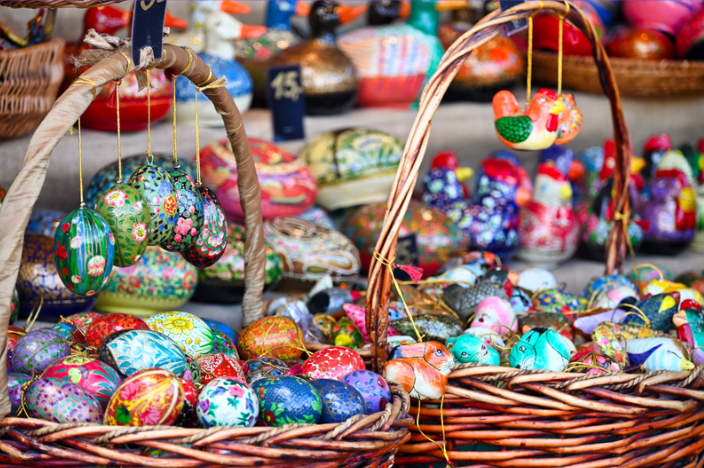
A highlight for the whole family is the hiding and searching of colourful Easter nests and dyed eggs on the Easter weekend itself. There are also numerous Easter egg games, such as egg pecking (two Easter eggs are smashed together – the one that stays whole wins) or egg rolling (eggs are rolled down a small slope – the egg that rolls the furthest wins). The traditional Easter feast (“Osterjause” in German) is probably the real star of the festivities, though: with delicacies such as smoked Easter ham, hard-boiled eggs, fluffy Easter striezel or sweet Easter lambs made from brioche dough on the menu amongst other regionally specific specialities.
| Did you already know? In addition to the widespread classics, many federal states also have their very own Easter traditions: In Carinthia, for example, Reindling (a cinnamony-sweet cake made from yeast dough) takes on a central role, while godparents in Tyrol hand out a so-called “Gotlpack” containing small gifts to their godchildren, and in Styria, children carry the traditional bonfire from house to house to bring good luck to the residents. |
Customs & traditions on 1 May
When it comes to customs, Easter is the big star in spring, but there are also numerous special features around 1 May. As Labour Day is a bank holiday and therefore a day off for most employees, many places start celebrating on the evening of 30 April. Many communities organise a May Day festival where the traditional maypole is erected – a tall, slender conifer stripped of most of its branches, and elaborately decorated with wreaths and colourful ribbons.
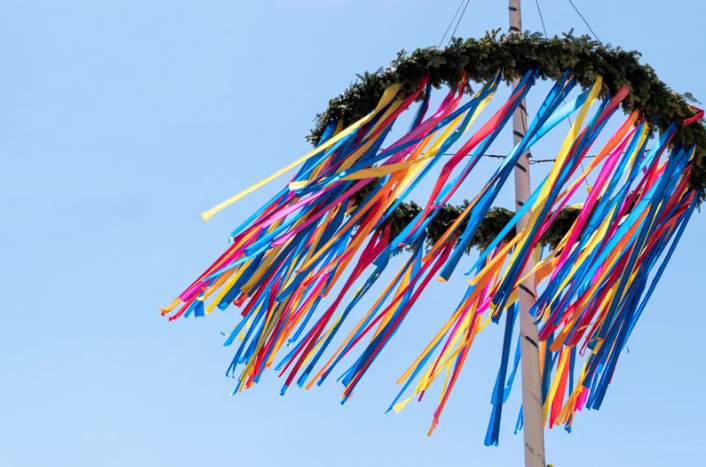
A particularly fun custom: Maypoles in Austria are often stolen, usually by youngsters or custom groups from neighbouring villages. If an unerected (or insufficiently guarded) maypole is successfully stolen, the thief must be rewarded, usually with a hearty snack or a generous donation of drink.
Customs & traditions in summer
Kirtag

Practically every Austrian municipality celebrates its Kirtag in the course of the summer, a celebration in honour of the respective church patron saint of the municipality. The festive programme varies by province and town, but it is common almost everywhere to have cosy celebrations in the town centre with live music, (folk) dancing and typical Austrian specialities such as roast pork, suckling pig and home-baked pastries. Carriage rides or fairground rides are also a quite common and well-loved attraction – particularly by children.
By the way: In addition to the official Kirtag, many local associations such as voluntary fire brigades, football clubs or country youth clubs also organise similar festival in the summer months – typically to collect donations and raise funds for the coming year.
| Tip: In addition to regional village festivals, there are plenty of other exciting events taking place all over Austria in the summer months. In our blog post on Austrian music festivals, we take a closer look at some of the most popular ones. |
Solstice bonfire
On 21 June, Austrians celebrate the longest day of the year with impressive midsummer bonfires – a tradition that’s especially popular in the western parts of Austria. Large piles of wood are put up, sometimes even in elaborate patterns and symbols, and subsequently set on fire.
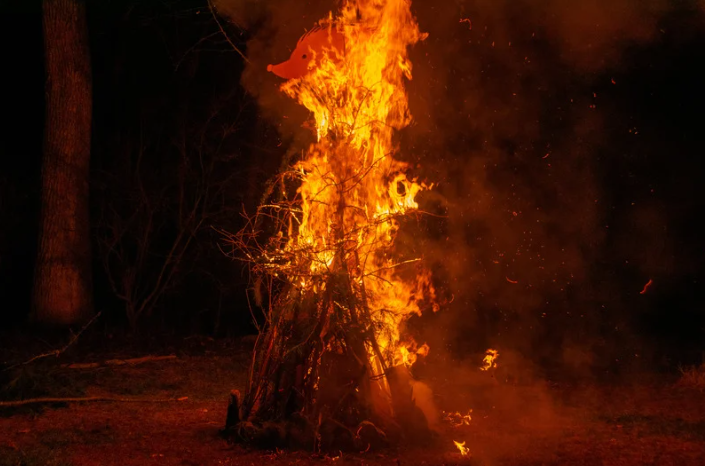
These fires can be seen from afar and light up entire mountain ranges and valleys, making them a spectacular visual highlight for locals and visitors alike. The original tradition was intended to drive away evil spirits, now it’s a social event where people meet and celebrate in a fun and relaxed atmosphere.
Almabtrieb
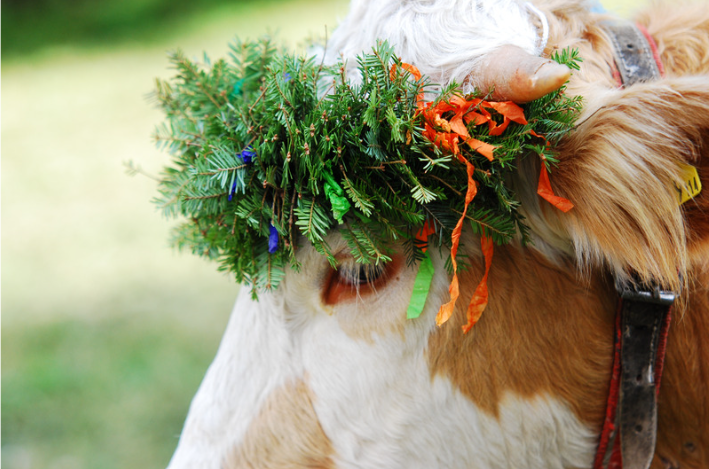
In the western pasrts of the country, the traditional driving down of cattle marks the end of the summer season in the mountains. After spending the summer up high on lush green pastures, the cows are now led back down into the valley – beautifully adorned with flowers, headdresses and bells.
Usually they are accompanied by dairymaids in traditional costume, with the procession finally met with music and a big welcoming party in the villages. Similar to the Kirtag, being social and having fun take centre stage at Almabtrieb. Accordingly, the menu often includes traditional Austrian food such as mountain cheese, Käsespätzle or sweet Tyrolean Schlutzkrapfen.
Customs & traditions in autumn
Erntedankfest
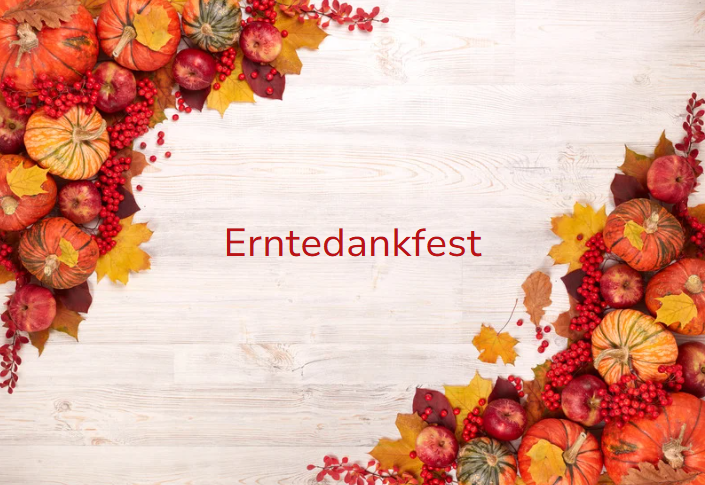
Erntedank, or harvest festival, is celebrated in autumn, particularly in agricultural areas – traditionally to give thanks for the rich harvest of the previous summer. In a solemn procession, elaborately woven harvest crowns made of straw and baskets filled with fruit, vegetables and grain are carried into the church and blessed. There also are colourful celebrations with music, dancing and regional delicacies being served for hungry guests.
Cider festivals
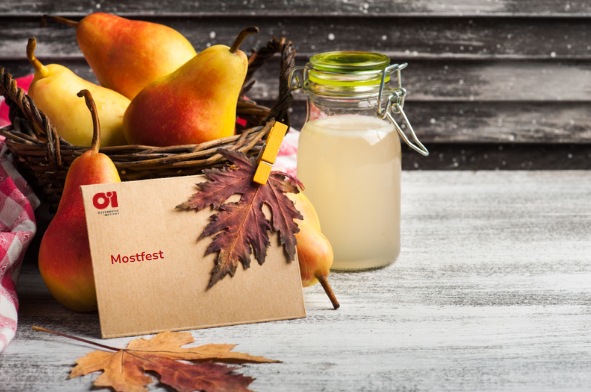
While Thanksgiving is celebrated in many parts of the country, in Lower Austria’s Mostviertel and Styria everything revolves around cider, i.e. fermented juice made from apples or pears. Local farmers celebrate the new batch and invite visitors to taste their produce. This includes culinary specialities such as cider cake, Bratl and Strudel, with competitions to choose the best cider in the region frequently held as well.
Martiniloben & Martinigansl

Speaking of drinks: Austrian wine is also given special attention in autumn. In Burgenland, which is known for its rich viticulture, the traditional Martiniloben takes place around the bank holiday on 11 November. Local Vinyards open their cellar doors and invite visitors to taste the new vintage. A culinary highlight at this time of year is the so-called Martinigansl, a crispy roast goose served with sides ranging from red cabbage to potato dumplings – a tradition that has also established itself across the county lines throughout November.
| Tip: If you’d like to brush up on your cultural knowledge and language skills, the Österreich Institut is your ideal point of call for state-of-the-art German courses across Europe. Whether you’re looking for an individual course, a specialised language course or German for business – we’ve got plenty of courses to suit your language level from A1 to C2. Get in touch today, and our expert staff will be more than happy to offer guidance and advice! |
Winter customs
Advent season
At the end of November and in the lead-up to Christmas, Austrian festivities step up a gear. Many households have an Advent wreath with four candles, with a new one lit on every Sunday in Advent until Christmas Eve. The Advent calendar is also a firm fixture, with a little surprise waiting behind the doors every day from 1 to 24 December. Around Krampus and St Nicholas’ Day on 5 and 6 December, children receive small bags (“Sackerl”) with gifts. These usually contain sweets, mandarins and nuts “from St Nicholas” – unless the children have been naughty, in which case they may also contain coal from the devil, who is also known as Krampus.

Another tradition at this time of year is the Krampus or Perchten runs, where whole groups (usually from professional Perchten clubs) parade through villages and towns in scary, artistic Krampus costumes, accompanied by cowbells and music. Many families also bake Christmas biscuits together during Advent, while atmospheric Christmas markets with punch, mulled wine and handcrafted goods are a particularly popular institution, attracting visitors from all over the world to Austria towards the end of the year.
Christmas
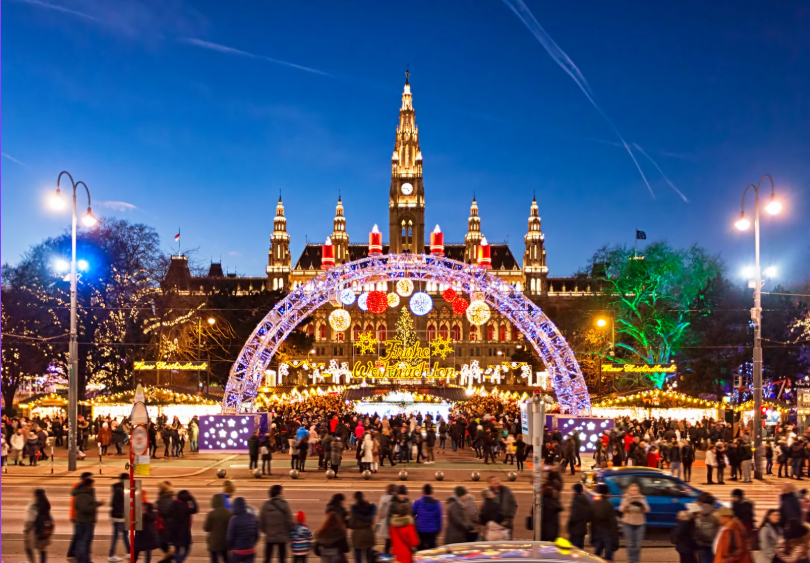
Besides Easter, Christmas (24 – 26 December) is the second major high season for Austrian customs. Unlike in other countries, it’s not Father Christmas who brings the presents, but the Christkind (Baby Jesus). These are placed underneath the decorated Christmas tree and exchanged on Christmas Eve. The classic Christmas meal usually is made up of various traditional delicacies which can range from carp to a Christmas goose. 25 and 26 December are usually reserved for visiting family to bring the holidays to a relaxed close – usually with even more culinary treats and copious amounts of traditional biscuits.
New Year’s Eve & New Year
The turn of the year in Austria is also steeped in traditions. One of the most common is lead or wax moulding, where led (or wax) are placed on a spoon, molten over heat, and then poured into cold water. The resulting shapes are then carefully inspected and defined as specific imagery, which (relying on a great deal of imagination) are supposed to predict what’s in store for an individual in the new year. Things get lively at midnight when many Austrians dance into the New Year to the sounds of the Danube Waltz.
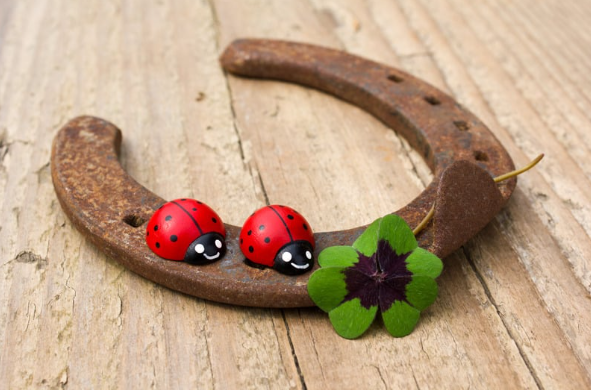
Giving gifts of lucky charms such as shamrocks, marzipan pigs or horseshoes is also a very popular tradition. However, probably the most famous New Year’s Eve tradition takes place the day after the big New Year’s Eve parties: The New Year’s Concert of the Vienna Philharmonic Orchestra, which attracts numerous visitors to the magnificent ballroom of the Vienna Musikverein every year – and is broadcast all over the world.
Socialising all year round: Stammtisch & Frühschoppen
Although many Austrian traditions are tied to specific dates, there are some customs that are celebrated independently of public holidays or special occasions. The most important: Stammtisch (literally: regulars’ table) and Frühschoppen (morning pint).
At a Stammtisch, groups of friends or entire clubs meet in a pub or inn, often in a fixed spot and usually always at the same time – hence the name regulars’ table. As mentioned above, there is no officially set date for this, so these gatherings can take place any day of the week, and throughout the whole year.
The Frühschoppen, on the other hand, traditionally takes place late on Sunday mornings (in the past it was traditionally held after church), where people meet for the first glass of wine or beer of the day, often accompanied by a small snack or a game of cards. Despite the differences, both customs are centred around the same idea: casually catching up and, of course, exchanging gossip and news from the village.
Different countries, different customs: The many traditions observed in Austria can be a bit confusing at first, especially if you’ve only come to Austria recently. But fret not: with the above guide, you’re well equipped to expertly throw yourself head first into the local shenanigans. And if you’d like to find out even more about the culture, language and life in Austria, there’s plenty of insightful and inspiring reading material for you on our blog: from the most famous Austrian writers to our best tips for learning German. Happy reading!
